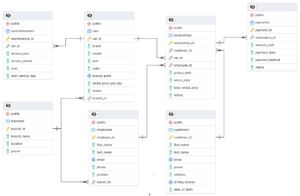Understanding PostgreSQL Architecture

Introduction
PostgreSQL is a powerful and highly extensible relational database management system (RDBMS) known for its robustness, scalability, and compliance with SQL standards. To fully leverage PostgreSQL’s capabilities, understanding its architecture is essential. This article explores PostgreSQL’s internal architecture, including its key components, processes, and how data is managed efficiently.
Key Components of PostgreSQL Architecture
PostgreSQL’s architecture consists of several key components that work together to handle queries, manage transactions, and ensure data integrity.
- PostgreSQL Server Process
- The PostgreSQL server (also known as
postgres) is responsible for handling database operations, managing connections, and executing queries.
- The PostgreSQL server (also known as
- Client Applications
- Clients interact with PostgreSQL using various interfaces such as
psql, GUI tools (pgAdmin, DBeaver), or application libraries (JDBC, ODBC, psycopg2 for Python).
- Clients interact with PostgreSQL using various interfaces such as
- Shared Memory and Buffers
- PostgreSQL uses shared memory to optimize performance by caching frequently accessed data.
- Shared Buffers: Stores recently accessed database pages to reduce disk I/O.
- Work Memory: Allocated per query for sorting and hashing operations.
- WAL Buffers: Temporary storage for Write-Ahead Logging (WAL) before being written to disk.
- Background Processes PostgreSQL runs multiple background processes to ensure smooth database operations. Key processes include:
- Autovacuum: Prevents table bloat by cleaning up dead tuples.
- WAL Writer: Manages WAL (Write-Ahead Logging) to ensure durability and crash recovery.
- Checkpointer: Periodically writes modified data from memory to disk.
- Archiver: Handles WAL archiving for backup and replication.
- Stats Collector: Gathers query performance statistics.
- Process Model
- PostgreSQL follows a process-based model instead of a thread-based approach.
- Each client connection spawns a separate backend process to handle queries independently.
- Storage System PostgreSQL efficiently stores data using:
- Heap Tables: The default storage for tables.
- TOAST (The Oversized-Attribute Storage Technique): Stores large values like JSON or TEXT outside the main table.
- Indexes: Used to speed up queries (B-tree, Hash, GIN, BRIN indexes).
- Tablespaces: Allows storing database objects in different locations for performance tuning.
- Transaction Management
- PostgreSQL ensures data integrity using ACID (Atomicity, Consistency, Isolation, Durability) properties.
- It uses MVCC (Multi-Version Concurrency Control) to allow multiple transactions to occur simultaneously without locking issues.
- Write-Ahead Logging (WAL)
- WAL ensures data durability by writing changes to a log before applying them to the database.
- It enables crash recovery and supports replication features.
- Replication and High Availability
- PostgreSQL supports Streaming Replication for high availability.
- Logical Replication allows selective data synchronization.
- Hot Standby enables read-only queries on standby servers.
Conclusion
Understanding PostgreSQL’s architecture helps developers and database administrators optimize performance, manage transactions efficiently, and ensure high availability. By leveraging its shared memory, storage model, background processes, and WAL mechanism, PostgreSQL provides a reliable and scalable database solution.
Stay tuned for more PostgreSQL tutorials covering advanced database management techniques!
